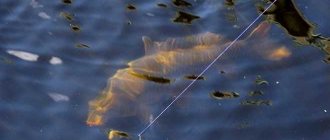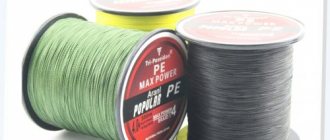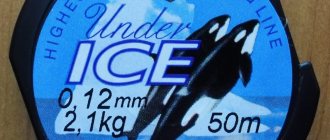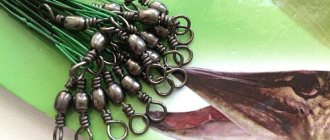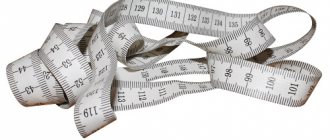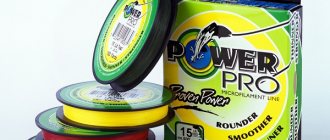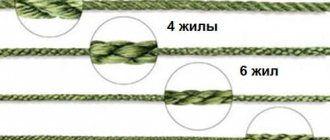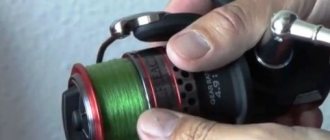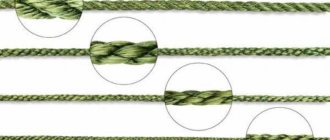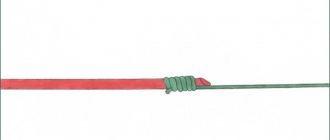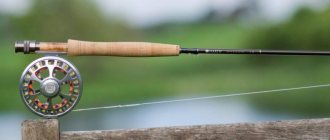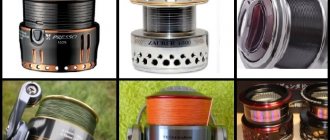With a large selection of braided lines on sale, you need to know how to make the right choice for your upcoming fly fishing trip. There are many nuances, for example, the depth of fishing depends on the speed at which the bait sinks, because the adhesion of the braided line to the water is the basis of fly casting.
In addition, not every beginner knows that when casting in a ring, the bait should describe the trajectory as low as possible. It’s easy to make such a cast from a boat or wade, but when casting from the shore you have to kneel down.
What is it and what is it used for?
The cord behind the structure is woven or glued fibers into a braid . For additional protection, braid can be used, which increases the service life when fly fishing in salt water.
- Most often used for jigging and twitching fishing.
- Braided fishing line wins in terms of casting accuracy. The fisherman feels the bite.
- The cord may be soft or hard.
- Soft, pleasant to work with, but require attention.
- Hard ones lose in range, but almost never get tangled, and if a beard has formed, it’s easy to untangle.
Cord structure
Behind the structure, the braided cord can be weaved like a stocking or like a pigtail , but it can also be without weaving: in this case, the fibers run parallel. Then they are connected by a shell or fusion.
When weaving jutes ( jute is a braid made from several lines . By the way, this type of binding is also done in thread. After weaving all the braids (jutes) they are woven together into one braided cord), there can be 4, 8, 10 or more of them in a braid. Moreover, jute itself contains an average of 45 fibers. The strength of the braid is affected by the diameter of the fiber itself. The fibers in jute can be impregnated with fastening compounds for rigidity, or they can be unimpregnated, which means that such a braid will be soft. Impregnation gives color to braided cord, although, for example, Hercu line is white because the impregnation does not have dyes. Please also take into account that the addition of dye reduces the mechanical properties of braided lines .
To increase rigidity and density, “sintering units” are also used, which come with a distance of one millimeter. This Fire line resembles a bamboo stem.
By the way, braids with “sintering units” are superior in strength to sheath cords.
With an increase in the number of jutes, the strength of the braid increases , but the price also increases due to the rise in price of the material and the weaving technology itself.
Jute, in braided line, can have different physical properties. For example, Cannelle consists of three different jutes. Thanks to this, the braid is abrasion-resistant and has a low coefficient of friction, but is also soft and holds strength even if several fibers are damaged. Cannelle and the similar Reel tress can be used without metal leads.
The cheapest cords are those in which the fibers are not intertwined and glued, but such cords are the most short-lived, because the glue comes off after several fishing trips, and the jutes begin to delaminate.
The structure of the braided cord with a sheath is not only protected from wear, but can also be fluorescent ; for this, the sheath is coated with special dyes. The shell itself can be Teflon (Spiderwire fusion), polyamide or cheap materials.
Cheap cords have one important drawback . They begin to become shaggy when the shell is damaged, which entails a decrease in casting distance, increases windage, and deteriorates strength. But on the other hand, the braided cords in the sheath glide evenly from the spool and do not get tangled.
There are also related technologies in the manufacture of braiding. For example, Fire Devil from Byron, is a braided and impregnated braid of polyamide jute in a sheath. If we look at similar cords, we also come across Kevlar ones, although most often on sale are braids with polyethylene jute fibers. When purchasing such cords, professionals ensure that they are made from PE-grade ultra-molecular polyethylene . PE is superior to other materials of this class in durability, softness and density.
The Japanese concern Gosen has developed the Tecmy technology; such a new material is polished during initial operation and over time takes on the appearance of a monofilament, so the shell does not tear.
Basic parameters of fly fishing lines
Some beginners limit their knowledge of cords to the use of floating models. However, the need for a deeper dive into the theory gradually appears. Then you have to get acquainted with such characteristics of fly fishing lines as: • weight, • shape, • density.
Fly Line Weight or AFTMA Class
In a well-tuned fly rod, all the elements must fit together. Only then will the fly fly accurately and far. A special AFTMA system was invented to classify cords by weight. In it, all products are divided into classes, starting from 0 (super-light models) and ending with 15 (super-heavy marine cords). The first 30 feet or 9.14 m became the basis of this technique. Depending on the mass of this segment, the cord belongs to one class or another. The AFTMA classification has greatly simplified the process of selecting a line for a fishing rod. Many manufacturers put markings on the form that correspond to the AFTMA system. For example, if class 6 is indicated on the fishing rod, then the fishing rod must be equipped with a cord with the same digital designation. The choice of line is also influenced by the size of the bait used. The lighter and smaller the fly, the smaller the class the line should be. It is sometimes necessary to break this rule, taking into account the density and purity of the water, the weather conditions and the type of fish. • It is best to catch small fish using small baits using class 2-3 models. The casting length will be within 12 m. Flies with hooks No. 16-22 according to the Redditch nomenclature are optimally suited to this category of cords. The tackle is completed with leashes and leashes 5x-8x. However, in strong winds, controlling such a fishing rod will be quite problematic. • Heavier cords (grade 4-5) allow you to use a wider range of baits when fishing. These include large flies (10-22) and medium-sized streamers (No. 4 and smaller). Leashes and leaders are selected with the designation 3x-7x. In addition, the tackle becomes obedient in windy weather. The casting range of this type of line is 15 m. • Large flies and streamers, even in windy weather, can be cast at 20 m if a class 6 or 7 line is wound on the reel. They go well with 0x-5x undergrowths. • Fishing for salmon or sea trout should be done with 8-9 grade lines. They allow you to cast over a distance of more than 25 m. The equipment is not afraid of strong wind gusts. The fly size for such cords is 3-4, and the fishing line for leashes requires 2x or higher.
Fly line shape
Today fly fishing lines come in a variety of shapes. Three main groups should be distinguished: • cylindrical, • torpedo-shaped, • double conical. 1. Cylindrical models have the same thickness along the entire length. They are designated by the letter L (Level) and are characterized by low cost. However, such a cord is not suitable for all fishing conditions. 2. The torpedo-shaped cord has a weighted front part, which is reflected in the designation WF (Weight Forward). The main section is thin and light, giving the advantage of long casting. 3. The double tapered cord has a flat center section and a gradual taper towards the end. The model is designated DT (Double Taper). The conical shape is most suitable for making circular casts and softly delivering the bait to the fishing point. Based on these three groups, many special modifications have been created. You can become interested in them once you acquire certain fishing skills.
Cord density
A fly cord allows you not only to cast bait over a certain distance, but also to immerse the fly to a given depth. That is why the angler has to pay attention to density. According to this parameter, all cords are divided into: • floating F (Floating); • completely sinking S (Sinking); • floating models with a sinking end F/S (Floating/Sinking). 1. Floating models have a flexible plastic shell with an air chamber inside (Air Cel). Thanks to this structure, the cord is constantly kept on the water surface. Floating products come in all classes, various shapes and colors. 2. The purpose of sinking lines is to lower the bait to depth. The shell of these models contains ballast substances, which are most often lead and tungsten. By adjusting their concentration in the cord, you can achieve fast or slow immersion. That is why there is a division into types from I to VI. For example, cord I has a immersion speed of 0.03-0.04 m/s, it is designated by the term Slow. But the V type is called Super Fast, in 1 second it goes deep by 0.14-0.15 m. 3. When using sinking fly fishing lines, certain difficulties arise. A completely sunken cord 15-20 m long is quite problematic to control. And it takes a long time to get it out of the water. The solution to this issue was the use of floating cords with a sinking end. One of the main characteristics of such models is the sinking speed of their ends, which ranges from 0.03 to 0.16 m/s.
Recommendations from professionals
And now, when all the indicators of the cords are mixed up in the head of a novice angler, you can use the advice of fly fishing masters. Based on their experience and previous mistakes, they recommend simplifying the choice as follows. 1. First, a beginner fly fisherman needs a floating line. All other modifications may be needed later. With a floating model it is easier to master the casting technique. In addition, this modification of the cords eliminates the possibility of the rod breaking due to incorrect actions. 2. Secondly, the cord must exactly match the class of the fishing rod. It is best to first decide on the weight of the cord (taking into account the fishing conditions and the size of the bait), and only then purchase a fly rod and reel. When two classes are indicated on the rod form, for example 5/6, then the cord is selected according to the lower value. In this case, model No. 5 is required. 3. And finally, you need to purchase your first cord taking into account your financial capabilities. The line of well-known fly fishing line manufacturers also includes budget products. They will be the best option for beginners. As an example, you can specify products from the USA SA Air Cel or the English version of Aitflo Velocity. A responsible approach to choosing a fly line will certainly affect the catches of a novice fisherman. Thanks to a balanced fishing rod, you will be able to quickly master various types of casting, move the bait naturally, and make adjustments to the tackle. In the future, there will be additional requirements for fly fishing gear, including cord.
Sources:
https://flyfishalex.ru/school/news/kak_podobrat_nakhlystovyy_shnur/ https://mympa.ru/content/vse-o-shnurax-dlya-naxlysta https://catcher.fish/ekspertnyi-tsentr/snasti/leska-snasti /vy-biraem-shnur-dlya-nahly-sta/
Characteristics
Properties are determined by the following parameters:
- Material;
- Weaving type;
- Joining fibers in jute;
- Using impregnation;
- Density;
- Surface;
- Wear resistance;
- Diameter _ If the American markings and their translation into SI are clear, then with Japanese cords problems arise for beginners. The thread weight number (dtex) is indicated on the spool . For example, cord index 1 corresponds to 245 dtex. 245 dtex –2.45 g per 100 m . And the conversion of the diameter in the ratio 1:0.3, that is, the number 0.2 is indicated, means the diameter is 0.06 mm;
- Test;
- Color;
- Strength, that is, elongation (sometimes they simply write that it is close to zero, in truth, 2–7% ).
- What waters will the fishing be in (salt or fresh, tropics or northern latitudes). There is no need to worry too much when purchasing. We sell cords that correspond to the conditions of the region, but if you plan to fish outside, then it is advisable to take a closer look.
Classification of fly fishing lines by weight
There is a single standard for classifying braided fly fishing lines and that is AFTMA.
Following this standard, the weight in grains of the first 9 meters (30 feet) is indicated on the spool (Gran is a system of weight measurement in the USA and Great Britain). The classes of line and rod must be the same.
| Cord class | Weight of first 30 feet in grains* | Weight in grams |
| 1 | 60 | 3,89 |
| 2 | 80 | 5,18 |
| 3 | 100 | 6,48 |
| 4 | 120 | 7,78 |
| 5 | 140 | 9,07 |
| 6 | 160 | 10,37 |
| 7 | 185 | 11,99 |
| 8 | 210 | 13,61 |
| 9 | 240 | 15,55 |
| 10 | 280 | 18,14 |
| 11 | 330 | 21,38 |
| 12 | 380 | 24,62 |
| 13 | 450 | 29,16 |
| 14 | 500 | 32,40 |
| 15 | 550 | 35,6 |
This standard includes:
- Color;
- Calculation for water type and climate;
- Casting distance (close or far);
- Classifies by buoyancy.
Question: Why do fly lines taper in length?
Very often fly fishermen ask why this happens and they are also often answered incorrectly. In fact, everything is very simple:
- The casting distance depends on the taper of the braided line.
- It makes it easier to control the accuracy of the bait falling into the water.
Cords based on purpose
- Universal - do not have their own designation.
- Presentation (DT, TT or WF) - fished with small flies of different types.
- Fished with nymphs with an indicator or loaded (nymph or indicator) - withstands a large load.
- Use a streamer (WF with a shortened head).
- Pike, bass (strong WF with shortened head). Used for long-distance casting of heavy and large baits.
Forms
There are several types of braided fishing line:
- Cylindrical (Level – L) – floats on the surface of the water.
- taper cord (DT) - goes with a cone at the ends and has a thickening in the middle. To extend the life of the line, fishermen turn it over. Mainly used for circular casting with a soft and silent landing of the bait on the water.
- Torpedo cord (Weight forward - WF). The leading edge thickens. Convenient for beginners in fly fishing on long casts, also popular with professionals. To make this cord heavier, lead or tungsten powder is added under the braid. WF has additional classes:
- WF Nymph - casts against the current using heavy nymphs.
- WF Bass Bug - used for fast retrieve of very large and heavy pike, barracuda, marlin flies.
- WF Steelhead and Salmon Taper - these lines are used only for ring casting.
- WF Spey Salmon - catch salmon.
- SH (shooting head) - a sinking line is used for long casts.
- ST (shooting taper) - a sinking line for circular casting of flies.
- A cord with a triangular profile at the front (triangle taper - TT) - the movement of such tackle is easy to adjust in any wiring. The cast is accurate, with the ability to adjust during the flight. Due to its similarity to a torpedo-shaped line, it is best used for long-distance fly casting, but ring casting (with a whip) can also be done without difficulty.
Density
Braided fishing line can be of several types of density, and therefore have different buoyancy.
- Floatihg Line - floating cord (F).
- Hover - located at the surface, only under the film of water (H).
- Intermediate - with neutral buoyancy (I). Such a cord is classified as sinking, but has zero buoyancy. Which is why it goes down the slowest.
- Floatihg/Sinking - the line has a sinking end and combined buoyancy (F/S).
- Sinking Line 1 (Sink 1) - slowly sinking line (S1).
Some tips for choosing cord density for different purposes:
- The sinking one is chosen based on the speed of immersion, because the depth of fishing depends on this.
- The sinking cord can be numbered S2 and S3.
- If you need a fast sinking one, then buy S4.
- S5 is already a super fast-sinking line.
- Well, S6 is an instantly sinking braid.
- Double markings are possible on the spool, for example, S5/S6, meaning the head body with a depth coefficient of S5, and the end with a coefficient of S6. This line is used in deep water and when fishing deep holes with strong currents.
When marking the cord, it is determined by the following indices:
- the first two letters indicate the design of the cord,
- the number shows the class,
- the last letter is the buoyancy of the cord.
Here are some examples:
- DT6F – double-cone cord (DT), class 6, floating (F);
- WF7FS – torpedo-shaped (WF), class 7, floating with a sinking end (FS).
- Fly Line, L, 9F, 30 Iards - fly line (Fly Line), with a cylindrical braid (L), floating class 9 (9F), 30 yards (30 Iards) long, which in the metric system means 27 meters.
Fly line shape
Fly fishing cords are available in a variety of shapes and sizes. It should be noted the most common groups of fly fishing lines by shape:
- - cords having a cylindrical shape;
- - torpedo-shaped cords;
- — there are also cords that have a double cone shape.
Cylindrical models of fly fishing cords are characterized by the same thickness parameters along the entire length of the cord itself. This form of fly fishing line is marked in the form of the letter L; these types of fly fishing line are characterized by low price parameters. It should be noted that these types of cords are not universal, and therefore are not suitable for all fishing conditions.
Torpedo-shaped cords are weighted models; they are designated using the letters WF; these cords are weighted on the front part. In these cords, the main section itself is thin and light, which gives a lot of advantages when making long-distance casts.
Double cone cords are characterized by the fact that they have a flat central section and also have a process of tapering the cord towards its end. These cords are designated by the letters DT. The use of these cords is most justified when making ring casts; this cord provides a softer delivery of bait to the fishing site.
These are the main groups of fly fishing lines, but on their basis a great many different varieties have been created, but they should only be used if you have some experience.
Care and storage
Keep the cord clean . Look at the sticker to see what is on the reel and what the manufacturer recommends to clean the cord with. Basically, wipe with a foam or felt cloth moistened with special solutions or a regular soap solution. Do not use oils, fats , chemical detergents, sunblocks or insect repellent oils to care for the cord.
- If these substances get on the braid, it is necessary to rinse it in cold water.
- Don't practice your casts on grass.
- Do not leave gear in direct sunlight.
- Pause between casts to clean the braided line.
- It also does not like the cord in the summer heat or places near heating systems.
- Check your spinning rod rings for burrs.
- Do not wrap the cord around your fingers.
- Monitor the lifespan of your braided line. After all, the manufacturers themselves warn that 200-300 hours of fishing is the limit. The fatigue of the material is taking its toll.
How to make a fly fishing line with your own hands
You can make a braided cord yourself. Here are two examples of homemade cords.
Option 1
- You will need 4 cords of 20 m each. Three of them are double cone and one is torpedo-shaped.
- To twist the cord with a foam rubber or felt cloth, use nylon fishing line No. 35.
- Cut pieces of 20 m, 20 m, 19 m, 18 m and 16 m. These sizes are for weaving double cone jutes. In the case of torpedo-shaped: 20 m, 19 m, 18 m 16 m and 15 m.
- Fold them in such a way that there are three edges at one end and three at the other. They should be positioned as in the picture below (approximately):
- The short ends are tied to the long ones.
- Secure it on a hook or driven nail. This is to make weaving easier.
- Next, weave it like a regular braid, but watch its tension.
- After weaving one braid, make three more exactly the same.
- Take the resulting 4 cords and weave them together.
- After weaving the entire cord, one end is secured to a hook and moistened along the entire length.
- The other end is hung with a load weighing several kilograms through the block and allowed to dry.
- When the cord is dry, it is impregnated with a mixture of paraffin, wax and technical petroleum jelly in proportions 3:3:1.
Option 2
The actions are similar, in that in the first option , only four segments are taken: 20 m, 18 m, 18 m, 16 m.
One jute is made from such pieces of fluorocarbon fishing line with a diameter of 0.1 mm. The next two are also made from similar pieces, but a copolymer line of the same diameter is already used. After that, a braid is made from the three resulting jutes.
There is no need to impregnate such a braid. Just moisten it with water and let it dry in a stretched state.
By the way, with this option you can weave three jutes from different monofilaments not only in structure, but also in color.
It’s difficult to call this video option number 3, and the cord here is not for fly fishing, but! It is worth noting his ingenuity and very interesting approach . Perhaps someone will take it into their arsenal.
Fly Line Classes
There is a special system for classifying fly fishing lines. In order to properly use a fishing rod with a fly line, it is necessary that the main elements of this rod are fully combined with each other.
It is with the correct selection of elements that long-distance casting processes will be carried out with great ease, and over long distances. The process of classifying fly lines is carried out using the AFTMA system. It is this class system that allows you to assemble this equipment in such a way that all the elements are combined with each other.
There are classes in the system from zero to fifteen. Zero classes mean super light equipment models. The fifteenth class is super heavy among fly fishing equipment. The basis for this system was the initial thirty feet (nine meters and a tail) of fly fishing braid.
Based on the weight parameters of a given section of fly line, the relationship to a particular class in the system is determined. For example, your fishing rod is marked sixth class, and this will mean that you should select fly fishing lines of the same class for this fishing rod.
Depending on what kind of bait will be used, the parameters of the class of equipment chosen will also depend. It would be much more correct to initially purchase the fly fishing line itself, and based on its parameters, you should select the rod itself.
